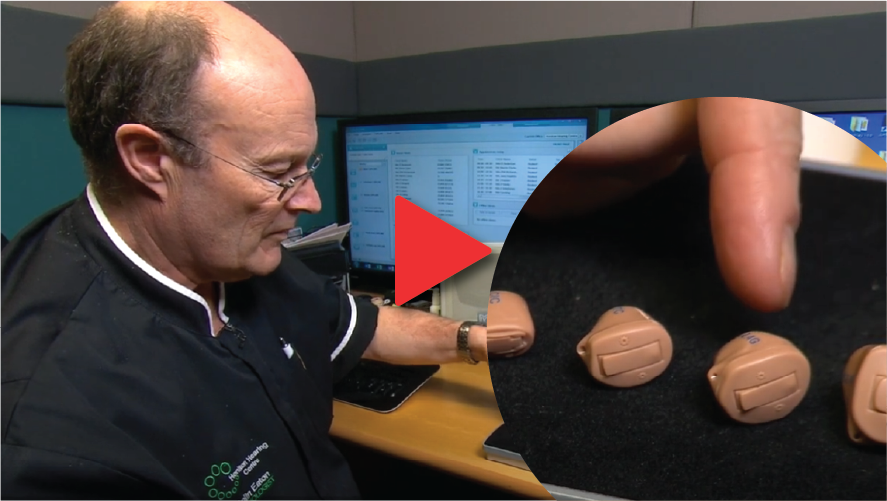STYLES OF HEARING AIDS EXPLAINED │ with colin
Colin shows us the different styles of hearing aids available. As an independent practice, Honiton Hearing Centre provides all of the styles that you will see in this video, from all leading manufacturers.
Certain hearing aid styles will suit some individuals better than others.
Following a hearing test we can use your results and any relevant information we’ve learned about you during your consultation, to recommend a hearing aid most suited to your level of hearing loss, lifestyle and budget.
You can learn more on our Hearing Aid Page.
If you have any questions, use our Enquiry Form or give us a call on 01404 47070
Video Transcript:
Hello it’s Colin Eaton from Honiton Hearing Centre and I’m the audiologist here and I thought today I would just talk to you about the range of hearing aids that are available in different sizes. It’s a question I’m often asked, what’s all the difference and types of hearing aids that are around.
Now, these hearing aids are an example of the range of styles that you can get just from one manufacturer, bare in mind there are about 12 manufacturers in the U.K. So all the manufacturers will have a variation on the styles we have. And am just going to run through what they are and the types of anachronisms that you will hear.
So, first and foremost, this one is probably pretty well known, it’s called a BTE which is a behind the ear, mainly because when the hearing aid goes in, I will just show you.. You just put it in your ear, and it sits behind your ear like so. So it’s behind the ear! The actual hearing aid is behind the ear and is connected with a tube. So that’s the more traditional type of hearing aid that we see around a lot.
That in recent years because people don’t really need quite as much power, has been superseded by this one where the tube, on this one, has been replaced by a wire, and the loud speaker what we would call a receiver sits in the ear on a little dome and a wire clip around the back. This one is called a receiver in the canal, or a receiver in the ear because the receiver sites in the ear. And again I will pop it on just to show you and that sits in your ear like so. Now you have the little wire running down here lot less visible, lot less open, not so tight and you don’t have a hard tip in your ear unless you are looking for a lot of power.
So I will take that one back out again, and now we have Behind the ear.. Receiver in the canal or BTE or RIC or RITE both are interchangeable.
Now hear we have these 5 and are known as in the ear hearing aids or ITE hearing aids. This one is a half shell hearing aid, This one is known as an in the canal, this one is known as a mini canal and this one is know as a completely in the canal and this one is known as an invisible in the canal. And they go right in the ear, I will just show you on this ear, and this one goes in here and drops right into the ear, almost invisible, it’s a black faceplate on white just to show you how far it goes in, but it goes right in the back of the ear. This of course is a little handle to pull it out with, and you train those to sit in the ear so you can pull them out.
This one is slightly bigger.. and you can see now that one is slightly bigger, the rubber of the ear is forcing that back out, but it would roughly sit there, and then if I push that one out, no handle on that one?
There we go, this one is what they call the ITC or in the canal, slightly bigger again, and you can see that this is starting to get slightly bigger the ear the further out it comes. Bare in mind that these dummies have all been made for my ear and not made for this rubber section, so they are not always a good fit.
This one is a half shell, so that’s bigger again, that the size my own dad wears, and then this one is what is known as the ITC and fills up most of the conchal bowl and you will get many variation on this depending on the size of the canal at the back sometimes they will fit right to the top of the helix as well. Now on this one you can see it has a volume control top right hand corner, it has a little push button there for changing programmes, and the two microphones, there’s one there and one there, are actually directional microphones and that will allow us to turn the back sound down or adaptive microphones that will sweep all away around the room to pick up sounds as they come in, but that’s perhaps for another video when I explain about directional microphones and how directional mics work.
So there you have it, behind the ear, receiver in the canal, half shell, in the canal, completely in the canal and invisible in the canal, all getting smaller from just the one manufacturer in this case it’s Bernafon.

